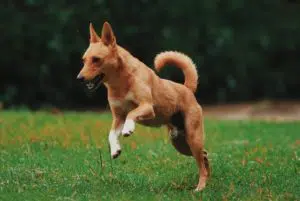
One of the most common problems I have to address as a dog trainer is not so much the bad behaviour in dogs, but rather the behaviour of the owner.
In the majority of cases where an owner has complained about their dog jumping or barking, not coming back to them at the park, jumping up on the furniture and other annoying habits that have formed, these actions have become a problem because the owner has actually encouraged their dog to do them.
“How can that be?”, I hear you ask. Well, the answer is very simple once you stop to think about your own actions at the time your dog is doing something you don’t want it to.
Most dog owners will have learned at puppy school that the best way to get a dog to do what you want them to do is to reward them with something that they want (i.e.: a treat, a pat, praise or toy) at the time they are demonstrating the desired behaviour. This is the foundation of positive reinforcement training.
By rewarding a dog at the exact moment they are displaying the behaviour or action you want them to, dogs are able to learn what behaviour/actions have a good consequence which reinforces that desired behaviour. And, anything that we reward and reinforce with a dog, makes it more likely to occur again in the future with more intensity and frequency.
Keeping this in mind, this is where people often go wrong and where owners reinforce bad behaviour in dogs. Whilst it is simple to remember to reward your dog when you are teaching it to sit, or drop or other obedience command, we tend to forget about rewarding and reinforcing their day to day good behaviour and unknowingly tend to reinforce unwanted behaviour. In training terms we call this Inadvertent Reinforcement.
Have you ever wondered why your dog continuously jumps up on you even if you say “no” and push it off you every time it does this? Or, why it barks at the back door non-stop until you go out and let it in, or shout out to it to “be quiet”?
Let’s look at it from the dog’s point of view. What does the dog want from you when it is doing either of these actions? To be near you, to touch you, have you touch them, to get your attention, or to be let inside.
So, even if you are yelling at or telling the dog off when it is jumping up or barking, (which you assume would make them stop, or maybe it does this time!) what are you actually giving to your dog? Exactly what it wants – your attention!
So, you have actually given them a reward for this behaviour – a positive consequence i.e.: what it wants at that time! This then reinforces that bad behaviour in dogs… and so the problem begins.
In fact some of the most common ‘problem’ behaviours, such as jumping up excitedly when anyone walks in the door, most likely began when you brought your dog home as a puppy.
Think about how excited everyone in the household was, all the patting and cuddling that went on as the puppy jumped all over everyone giving kisses, nibbling at fingers and hair and barking in excitement.
Fast forward one, two, three or more years later as the dog has grown in size and weight… now this behaviour isn’t considered quite so appropriate is it?
So how can this be addressed? Firstly if you are reading this before bringing a new puppy home, or your dog is still a pup, be very aware about what behaviour you are rewarding.
If you don’t want your puppy to become a ‘Jumping Jack’ as it grows older, then it is important not to reinforce this behaviour by encouraging it whilst it is young.
We want to reward and reinforce the puppy for calm behaviour and teach it an alternative behaviour to jumping up in greeting or barking at the backdoor. This could be teaching it to sit when you enter a room and rewarding this behaviour, so it is this response that is strengthened and therefore likely to occur in the future.
Or when a dog is outside barking, wait until the moment they go quiet and THAT is when you open the door to let them back inside, give them praise a treat, or whatever it is that they want at that time.
It can be harder if you are dealing with an older dog, but not impossible. With consistency, perseverance and ensuring you don’t continue to inadvertently reinforce your bad behaviour in dogs, you can teach your dog an alternative response that will result in the reward they are looking for.
Identifying the reason for bad behaviour in dogs is not always easy, but for many common problems it really does come down to how we respond to it and making sure we’re not unconsciously rewarding it.
Treats are a great way to reward and reinforce the desired behaviour you see and want your dog to display more of.
Be careful not to over use treats however. Keep them small, less than 10% of their total calorie intake and use praise or toys for a reward too.
For puppies, the Vitapet milky sticks are great so you can break them up small and they provide calcium for growing bones and bodies.They are also suitable for older dogs, but the Vitapet chicken sticks are good too for this.
Both have meat as the first ingredient and natural preservatives which is something I look for.
There are other ways to motivate and reward your dog, so learn more about dog motivation here.
About the Author: Lara Shannon is a certified dog behaviourist and trainer, pet food nutrition specialist, Executive Producer and Host of Pooches at Play on Channel 10 and editor of Poochesatplay.com. Lara also runs her own dog training business in Melbourne’s Bayside area and is the Author of World of Dogs and Eat, Play, Love Your Dog


Toilet Training a Puppy for success

Tips for training a reactive dog


Scenting walks for dogs – why they are so important


Get your paws on Lara Shannon’s best selling books ‘Eat, Play, Love (your dog) and World of Dogs.
Available in Australia, USA, UK and Canada.